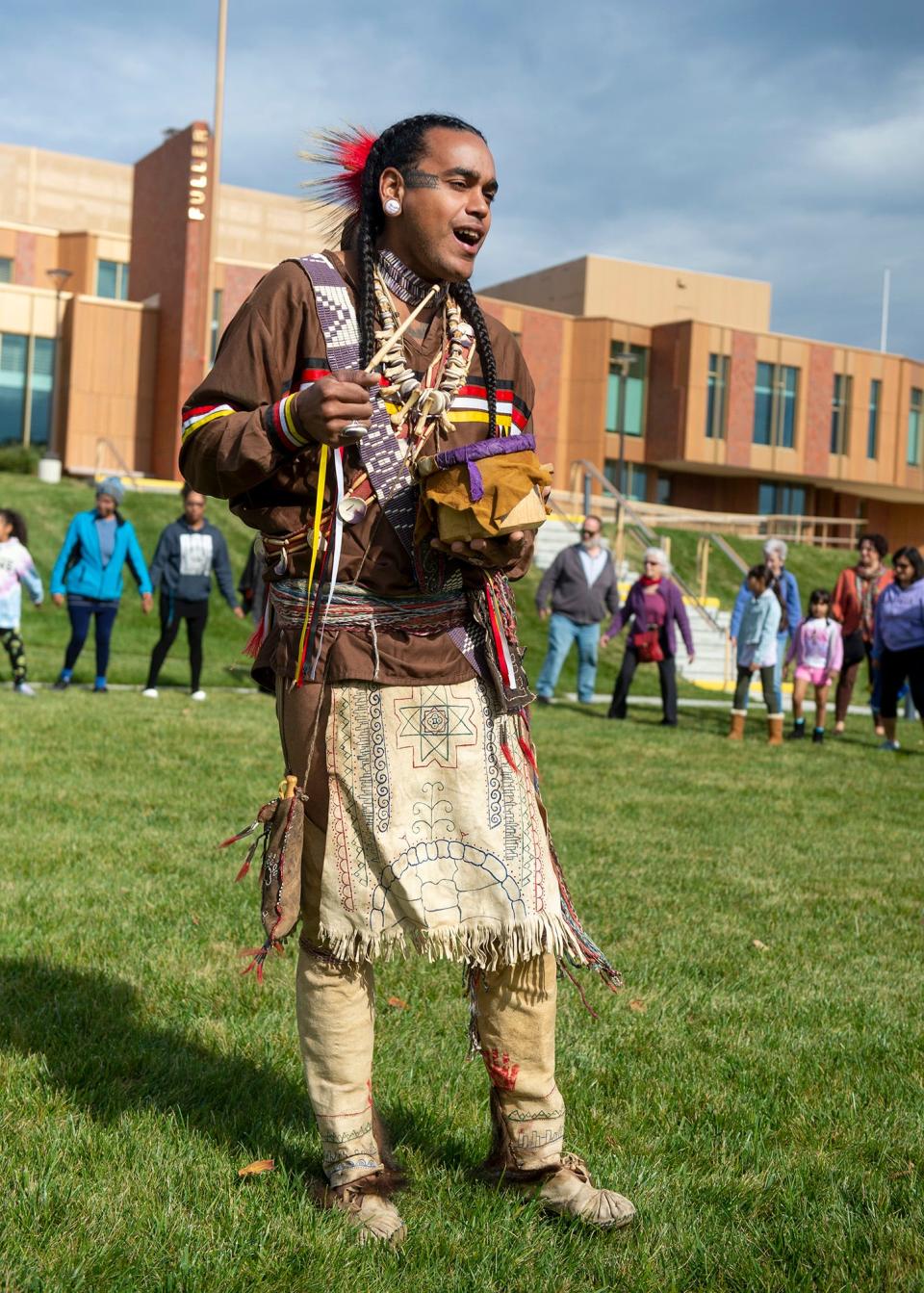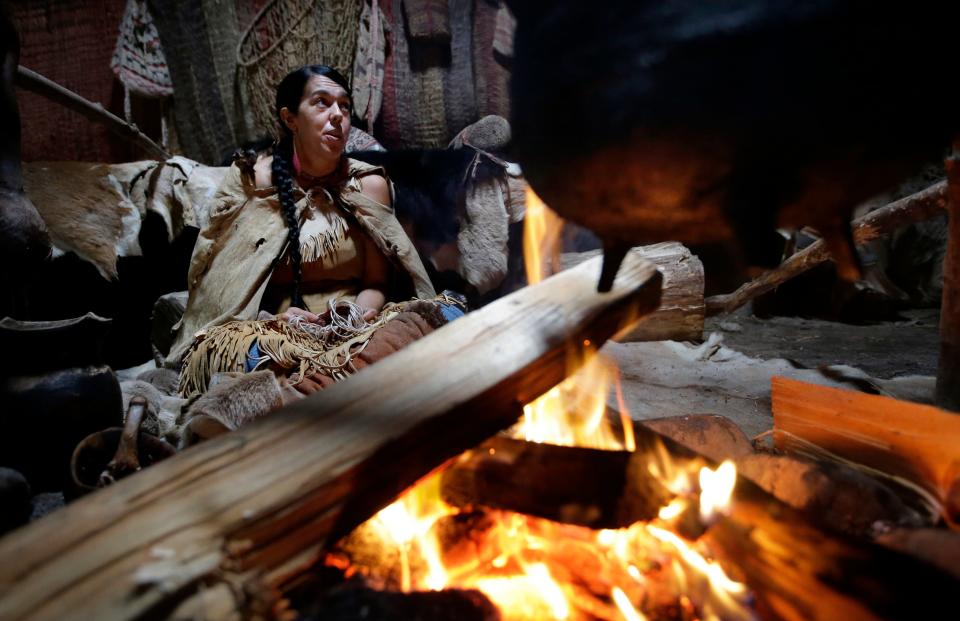Which Native American tribes live or once lived in present-day Rhode Island?
- Oops!Something went wrong.Please try again later.
Thanksgiving is one of the few times of the year when many modern-day Americans think back to the European colonists who first settled in North America back in the 1600s, and by extension the indigenous peoples who inhabited North America for thousands of years before then.
Everybody has heard the story of Squanto and the Pilgrims in 1620 (or at least a version of the story – did you know Squanto was captured and taken as a slave in Europe for about five years before that famous meal, eventually finagling his way back home only to find his original tribe decimated by disease?).
Less known are the histories of the five tribes that all lived in different parts of Rhode Island.
When Europeans first began to explore what is now Rhode Island starting in the 1500s, there were five indigenous groups living there: the Pequots, the Nipmucs, the Niantics, the Narragansetts, and the Wampanoags. By summer of 1676, the Narragansetts and the Wampanoags had decisively lost King Philip’s war, and Wampanoag Chief Metacom (King Philip)’s surviving family members were sold into slavery. The end of King Philip’s War signified the end of the Native American way of life in Rhode Island as it had existed before European settlement.
Here's a look at the five tribes that occupied Rhode Island at the time.
Pequots
The Pequots lived mostly in southeastern Connecticut, concentrated in a pair of encampments near what is now Norwich, but their territory extended to the modern Rhode Island border around Westerly and they fished the coastal waters as far offshore as Block Island. The 1637 Mystic Massacre, in which hundreds of Pequots including women and children were burned to death, was an early harbinger of how ruthlessly the colonists were willing to wage war to snuff out native resistance.
Nowadays, the tribe’s surviving descendants run the truly excellent Mashantucket Pequot Museum & Research Center in Ledyard, Connecticut, and the Pequot tribe also owns and operates Foxwoods, one of the largest and most successful resort casinos in North America.
Nipmucs
The Nipmucs lived principally in central Massachusetts, but their historic territory Nippenet, "the freshwater pond place," also included nearby parts of Connecticut and Rhode Island. Many Nipmuc joined Wampanoag Chief Metacomet's war against the settlers – known by Americans today as King Philip's War – in 1675, but the coalition of native tribes was unable to turn back the colonial tide. During the war, many Nipmuc who had converted to Christianity and lived in what were essentially reservations (called “praying towns” at the time) around Massachusetts were imprisoned on Deer Island in Boston Harbor; many of them succumbed to disease, malnutrition and the winter elements, while others were executed or sold into slavery in the West Indies.

The federal government denied the Nipmuc tribe federal recognition in 2004, but the tribe is recognized by the state of Massachusetts, where Nipmuc people continue to live to this day mostly in the areas of Dudley, Grafton, Natick and Sutton.
Niantics
Rhode Island’s Niantics, who were related to the Niantics of southeastern Connecticut but had their own distinct tribes and territory, lived on the coast of southern Rhode Island around modern-day Westerly and Charlestown. Their leader Ninigret met on several occasions with colonists, and his tribe did not take part in King Philip’s War, a conflict-avoiding decision that led to them holding onto their land longer than other Rhode Island tribes through the late 1800s. Eventually, however, their land was still taken from them. Many present-day members of the Narragansett tribe trace their lineage back to the Rhode Island Niantics.
Narragansetts
The Narragansett nation may have been the largest tribe in Rhode Island during the 17th century. As the Wampanoags declined, in part due to diseases brought by the colonists, the Narragansetts took over their territory on the islands of what is now Narragansett Bay. The Narragansetts first encountered Europeans in 1524 in the bay which today is named after them, and it was Narragansett Chieftains Canonicus and Miantonomi, two names that Newport County locals will probably recognize, who signed the 1637 deed which formally sold Aquidneck Island to Portsmouth and Newport founder William Coddington in exchange for wampum beads, winter coats and gardening implements.
Today, members of the Narragansett tribe run the Tomaquag Museum in Exeter which undertakes archival research, runs a variety of educational and speaking programs and contains a unique collection of thousands of cultural items.
Wampanoag
The Wampanoags lived mostly in southeastern Massachusetts but also in part of eastern Rhode Island – their territory ranged from Rhode Island’s Mount Hope Bay and the surrounding shores of the East Bay all the way up the Massachusetts Southcoast through Cape Cod, including Nantucket and Martha’s Vineyard. The Wampanoags maintain a presence on Cape Cod and Martha’s Vineyard to this day through the federally recognized Mashpee and Aquinnah tribes.

It was the Wampanoags who along with their adopted member Squanto taught the early English settlers of Plymouth colony how to grow corn, bean and squash using the “three sisters technique.” One possible explanation for this confederation of at least 24 tribes’ decision to establish cordial relations with the settlers of Plymouth Colony is that they had just been decimated by pandemic over the preceding years, from about 1615-1619.
Over 50 years later, the Pokanoket tribe of the Wampanoag, based in present-day Bristol and Warren and led by a chief named Metacomet who the English called King Philip, decided to lead a huge military campaign against the growing European colonies. In King Philip’s War, by some metrics the bloodiest war ever fought in American history, over 40% of the native population and over 5% of the colonist population were killed. The united tribes in southern New England attacked 52 of 90 colonial settlements before being defeated. Afterward, many of the relatively small population of surviving Wampanoag were sold into slavery in Bermuda, the West Indies, or right here in New England.
This article originally appeared on Newport Daily News: Narragansetts, Pequots, Nipmucs, Wampanoags occupied RI in 1600s

